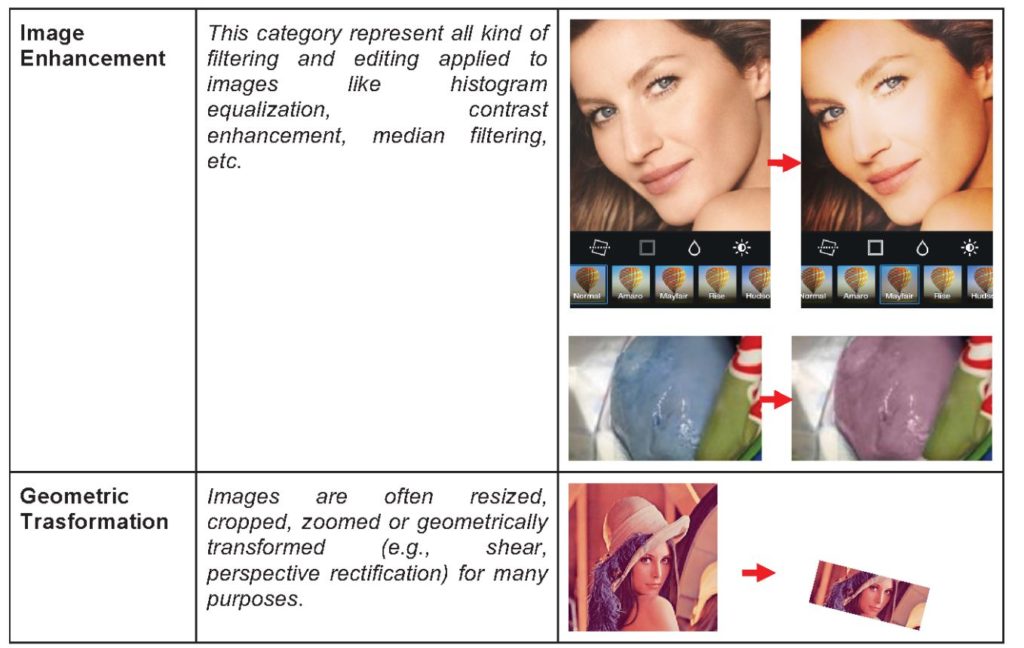
As a result of globalization and worldwide connectivity, people from all over the planet are exchanging constantly increasing amounts of images, videos, and audio recordings on a daily basis. The lifecycle of media contents is becoming more and more complex, with people increasingly accessing, sharing, modifying, adapting and re-using the digital information. Coupled with the easy access to user-friendly editing software, this poses a number of problems related to the reliability and trustworthiness of such content, as well as its potential malevolent use. In the last decade, the field of digital image forensics has undergone a constant expansion, drawing a growing attention of the research community. In fact, the increasing need of authentication techniques for multimedia content without a priori information has brought researchers to develop a number of forensic approaches designed to work passively and facing different forensic issues, like source identification, forgery detection, and computer generated versus natural content discrimination. The inspiring principle is that inherent traces are left in a digital data both when the content is created and during successive processing. Given the wide variety of potential processing operations and the corresponding traces, a high number of forensic techniques have been designed. Several valuable solutions to different forensic problems can be presented and discussed.